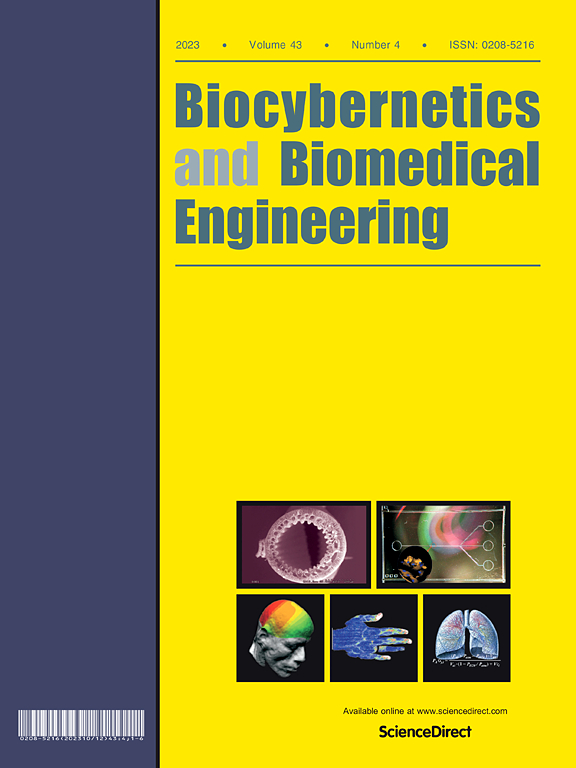熟悉度和重复度对视觉面孔知觉过程中神经活动的影响
IF 6.6
2区 医学
Q1 ENGINEERING, BIOMEDICAL
引用次数: 0
摘要
本研究利用事件相关电位(event- correlation potential, ERPs)考察了人脸感知的时间动态,以探讨熟悉度和重复度如何影响人脸加工的早期和后期阶段。采用广义线性混合效应(GLME)模型评估P100、N170和N250 ERP分量在三种刺激类型(知名、非知名和混乱面孔)、三种重复条件(首次呈现、即时重复、延迟重复)和两个大脑半球下的振幅和潜伏期。与早期视觉加工相关的P100成分没有受到刺激熟悉度或重复的显著调节,这表明在不同条件下知觉编码是稳定的。相反,N170和N250振幅受到重复的显著影响,表明在重复暴露期间神经反应增强,特别是在右半球。延迟分析表明,N250成分对重复时间也很敏感,延迟重复会导致更短的响应时间,这意味着处理效率和记忆参与的变化。多元时间序列解码进一步表明,与非知名面孔相比,混乱面孔和熟悉面孔之间具有更高的区分能力,特别是在第一次和延迟重复条件下。值得注意的是,即时重复的解码性能下降,表明短间隔重复减少了神经分化。这些发现为重复和熟悉如何调节面部感知的神经基础提供了新的见解,强调了时间动力学和半球专业化在面部加工中的作用。本文章由计算机程序翻译,如有差异,请以英文原文为准。
The effect of familiarity and repetition on neural activity during visual face perception
This study examined the temporal dynamics of face perception using event-related potentials (ERPs) to investigate how familiarity and repetition influence early and late stages of face processing. A generalised linear mixed-effects (GLME) model was employed to assess the amplitude and latency of the P100, N170, and N250 ERP components across three stimulus types (famous, non-famous, and scrambled faces), three repetition conditions (first presentation, immediate repeat, delayed repeat), and two brain hemispheres. The P100 component, associated with early visual processing, showed no significant modulation by stimulus familiarity or repetition, suggesting stable perceptual encoding across conditions. In contrast, N170 and N250 amplitudes were significantly affected by repetition, indicating enhanced neural responses during repeated exposure, particularly in the right hemisphere. Latency analyses revealed that N250 component was also sensitive to repetition timing, with delayed repetitions eliciting shorter response time, implying shifts in processing efficiency and memory engagement. Multivariate time-series decoding further demonstrated higher discriminability between scrambled and familiar faces compared to non-famous faces, particularly during first and delayed repeat conditions. Notably, decoding performance declined for immediate repeats, suggesting reduced neural differentiation during short-interval repetition. These findings provide new insights into how repetition and familiarity modulate the neural underpinnings of face perception, emphasizing the role of temporal dynamics and hemispheric specialization in face processing.
求助全文
通过发布文献求助,成功后即可免费获取论文全文。
去求助
来源期刊

Biocybernetics and Biomedical Engineering
ENGINEERING, BIOMEDICAL-
CiteScore
16.50
自引率
6.20%
发文量
77
审稿时长
38 days
期刊介绍:
Biocybernetics and Biomedical Engineering is a quarterly journal, founded in 1981, devoted to publishing the results of original, innovative and creative research investigations in the field of Biocybernetics and biomedical engineering, which bridges mathematical, physical, chemical and engineering methods and technology to analyse physiological processes in living organisms as well as to develop methods, devices and systems used in biology and medicine, mainly in medical diagnosis, monitoring systems and therapy. The Journal''s mission is to advance scientific discovery into new or improved standards of care, and promotion a wide-ranging exchange between science and its application to humans.
 求助内容:
求助内容: 应助结果提醒方式:
应助结果提醒方式:


